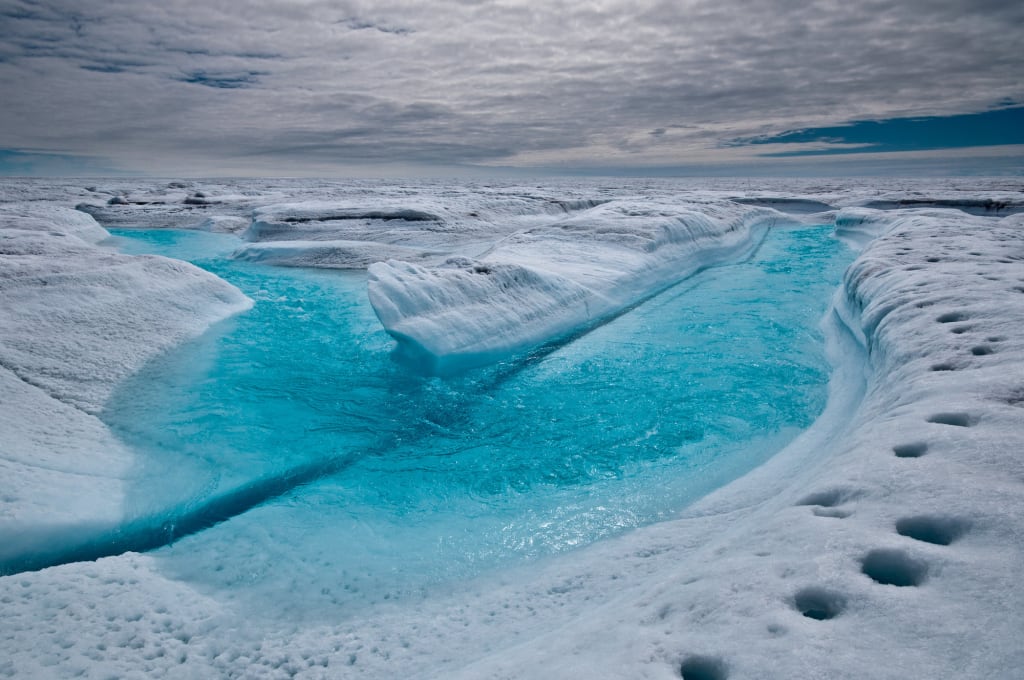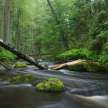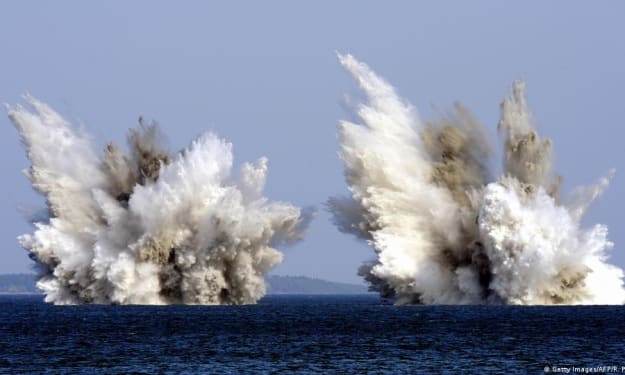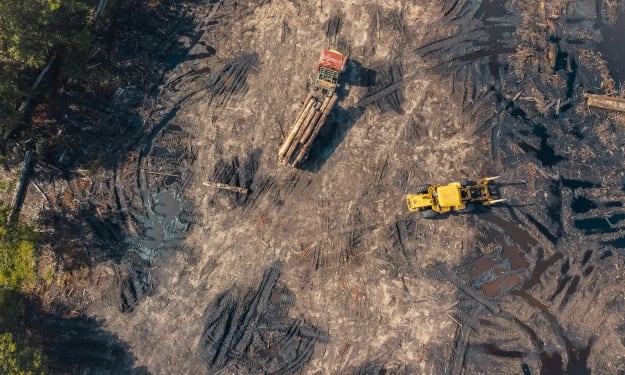Greenland's ice shelves, play a crucial role preventing sea level
Environment,Climate,Earth

Greenland's ice shelves, play a crucial role preventing sea level
Greenland's ice shelves, which play a crucial role in preventing sea level rise by holding back massive amounts of ice, are undergoing significant deterioration, according to recent scientific research published in Nature Communications. Since 1978, the northern Greenland ice shelves have lost approximately 35 percent of their overall volume, equivalent to around 400 billion tons of floating ice. These ice shelves act as barriers, preventing glaciers from flowing into the sea and accelerating the rise in sea levels.
Presently, only five large shelves remain, extending from their fjords towards the Greenland Sea and the Arctic Ocean. Among these, Petermann, Ryder, and Nioghalvfjerdsbrae (also known as 79 North) are the most prominent. If these glaciers were to melt completely, they could contribute up to 3.6 feet of sea level rise, a process that would unfold over centuries.
Romain Millan, the lead author of the study from the Université Grenoble Alpes in France, highlights that these remaining ice shelves are the last remnants of the ice sheet, as all the others have already collapsed or receded.
Losses of ice from Greenland have already accounted for approximately 17 percent of the observed global sea level rise between 2006 and 2018. However, if the remaining five ice shelves disintegrate, the consequences would be far more severe, resulting in both accelerated sea level rise and the absence of major ice shelves in the Northern Hemisphere. Despite the fact that Antarctica still possesses numerous glaciers with large floating extensions, the compromised state of Greenland's ice sheet, coupled with the prevailing planetary warming, has raised concerns about its future implications. Millan anticipates that the Northern Hemisphere is heading towards an ice-shelf-free state.
In this recent research, scientists hailing from institutions in France, the United States, and Denmark utilized satellite data, ocean observations, and climate modeling to assess the extent and thickness of Arctic ice shelves. They also examined the grounding line, the boundary where the floating shelves connect with the sea floor. Notably, this grounding line has been retreating inland across nearly all of the shelves, indicating their weakened state due to the melting caused by warm ocean waters from below. These findings bear significant implications, demonstrating a direct link between ice shelf changes and the dynamics of Greenland's glaciers.
The largest of Greenland's ice shelves, the 79 North, is approximately 300 feet thick at its edges, where it extends into the Greenland Sea. It serves as the exit point for over 6 percent of Greenland's ice, equivalent to nearly two feet of potential sea level rise.
The 79 North ice shelf had a companion shelf called Zachariæ Isstrøm, which formed the seaboard terminus of the Northeast Greenland Ice Stream. Between 2003 and 2012, Zachariæ Isstrøm disintegrated, losing 105 billion tons of mass. Subsequently, the glacier accelerated its flow into the ocean and currently contributes 18 billion tons of ice per year to rising sea levels. This precarious sector of the ice sheet could be particularly vulnerable.
In the early 2000s, two other smaller northern Greenland ice shelves also shattered, indicating that the loss of ice shelves is extending to the highest latitudes of the ice sheet. Consequently, much attention is focused on the remaining large ice shelves, particularly Petermann, Ryder, and 79 North.
Visiting Petermann in 2016, The Washington Post witnessed rain atop the shelf that exacerbated the already wet surface conditions, leading to cascading runoff. Recent scientific observations have revealed another alarming process that could accelerate the glacier's melt: the entire ice shelf rises and falls with the tides, allowing warmer Atlantic water to flow beneath it and create sizable open spaces beneath the glacier. This phenomenon may contribute to the rapid inland retreat of Petermann's grounding line in recent years.
Article written by Engr kawsar ahmed
About the Creator
Enjoyed the story? Support the Creator.
Subscribe for free to receive all their stories in your feed. You could also pledge your support or give them a one-off tip, letting them know you appreciate their work.






Comments
There are no comments for this story
Be the first to respond and start the conversation.